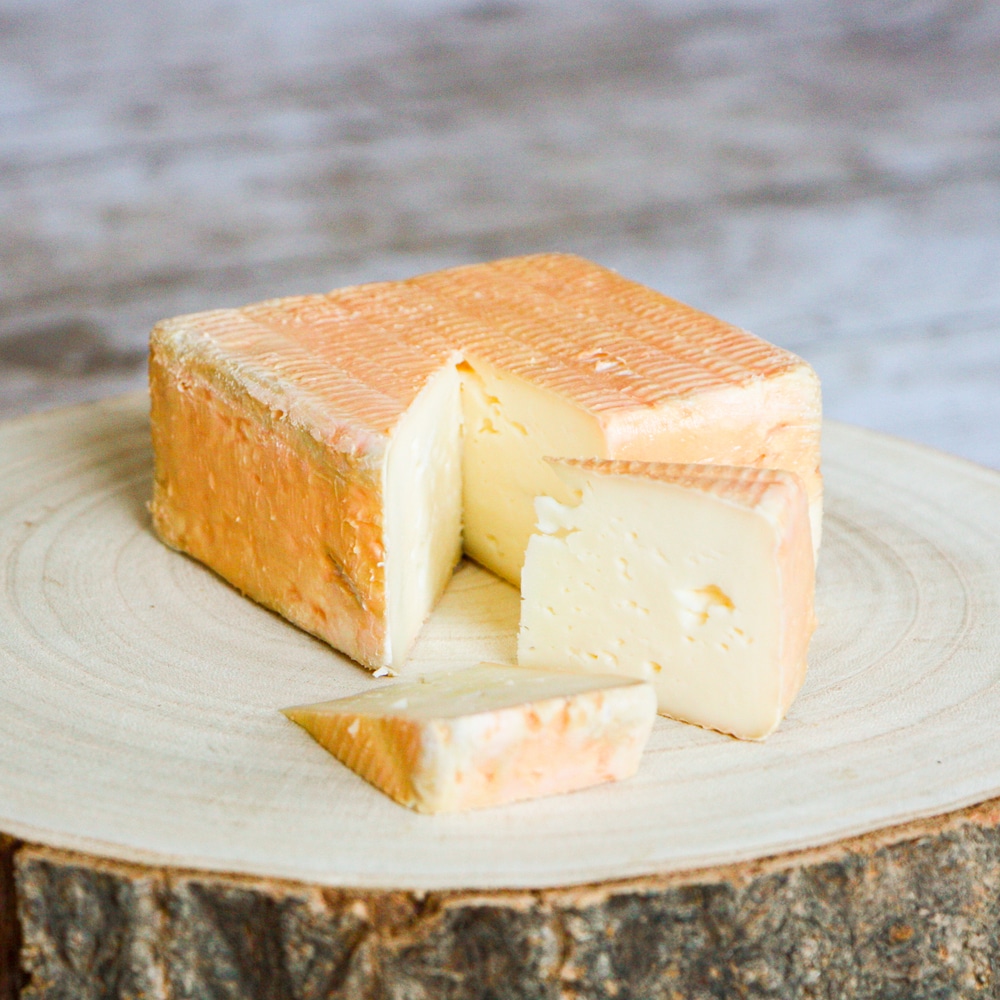The Maroilles
It is one of the oldest cheeses in France and its smell has long since crossed the borders of our region. Holder of an AOC and an AOP, Maroilles is our best culinary ambassador.
Maroilles not only in Maroilles
« Master crow, on a perched tree, held in his beak a cheese. » But which cheese was Jean de la Fontaine thinking of ? Maroilles ? The hypothesis holds true when we know that its exclusive production area is located in Thiérache, a region straddling the southern part of the Nord and the northern part of the Aisne. And incidentally, the department of origin of the most famous of our fabulists. However, if we don’t want to be accused of culinary uchrony, let’s be honest and say that this soft cow’s milk cheese with a washed rind was born around 960 in the abbey of Maroilles. A village well and truly located in the North. However, a millennium later, 4,200 tons of this culinary standard are produced each year. Of which 275 are farmhouse.
A brick of 4 sizes
To earn its AOC stripes, the finest of strong cheeses must show white « paste ». The specifications require that the cows from which its milk is obtained must graze at least 170 days/year in meadows and that grass represents at least 65% of their food. But that’s not all. The maroilles must be scrubbed with salt water – and not with beer as many people wrongly think – twice a week with a nylon brush. After that, it must be aged on racks in a cellar for a minimum of 5 weeks. That’s for the chemistry class. Now, let’s go to math. The maroilles is imperatively packaged in four sizes, all multiples of 180. Each weight has a name: 720 g (gros), 540 g (sorbais), 360 g (mignon) and 180 g (quart). The size of the sides varies (between 8 and 13 cm) as well as the thickness (between 3 and 6 cm).
In the kitchen
Some people say that anyone who has not tasted a Maroilles Flamiche at least once in their life has failed in their culinary education. But be reassured, the maroilles has a broad mind. It goes perfectly well with Licques poultry, in a sauce on mussels and French fries, in a quiche with endives or simply on a slice of bread. It is also very appreciated in Ch’tiflette, with lardons and potatoes.

